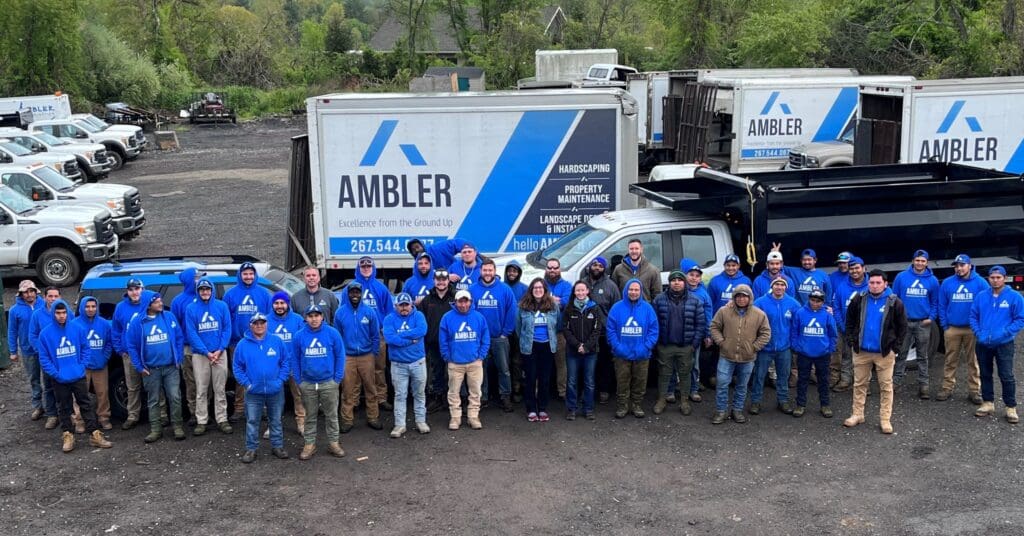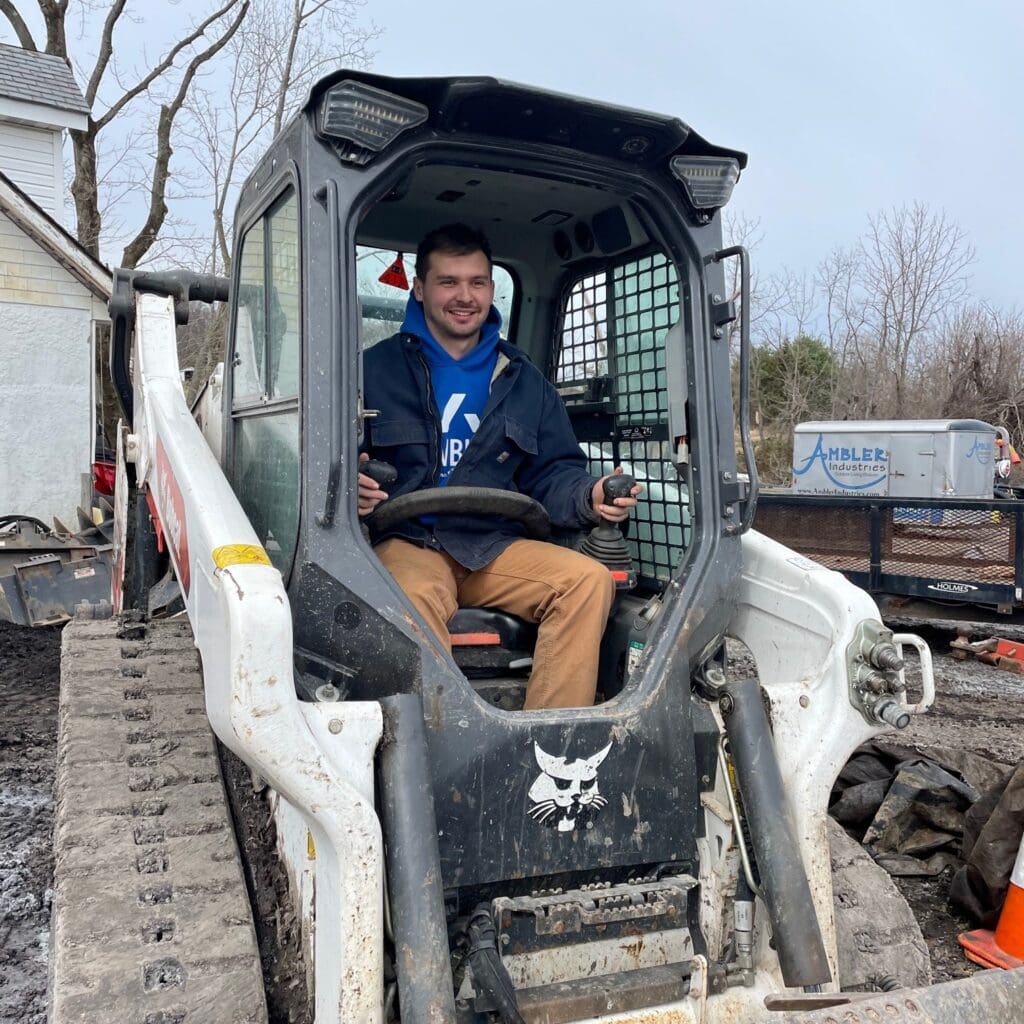
As company culture becomes more of a focal point for business owners, you’ve probably heard some say they only hire ‘cultural fits.’ This practice of hiring candidates who align with your landscape business’s values and mission can sound like madness in an industry where the labor pool is ever-shrinking, but the owners who have committed to this style of recruiting have reaped serious benefits.
“If a growth-minded company is looking to go from a million to $2 or $5 million, like our goal was to go from $5 to $10 million as quickly as possible, you’re not going to be able to grow without hiring for culture fit,” says Rob Ambler, president of Ambler Industries, based in Furlong, Pennsylvania.
Robyn Schmitz, owner and CEO of High Prairie Landscape Group, LLC, based in Edwardsville, Kansas, notes that it’s common for businesses to have an experienced or talented employee who doesn’t fit the culture but the owner keeps them because they believe they need that employee.
“We’ve observed this several times, and in almost all cases, that becomes toxic to the organizational culture because it communicates to the rest of your team that you’re not truly committed to your cultural values if someone happens to be good or experienced,” she says. “Also, when someone doesn’t fit your culture, they often cause friction due to the difference in attitude or behaviors. The combination of possible toxicity and friction from hiring or keeping a top-performer who doesn’t fit the culture is costly because it can cause employee turnover and resentment.”
Benefits of Hiring Only Cultural Fits
Choosing to hire cultural fits means you end up with employees who genuinely care about the company and they care about each other.
“When you hire people who fit your unique organizational culture, you’re able to protect the purity and integrity of that culture without ‘excusing’ culture-damaging behavior,” Schmitz says.

Edward Coady, CEO of Mainely Grass, based in Bedford, New Hampshire, says that looking at job candidates through the lens of ‘Are they a cultural fit?’ has resulted in improved employee retention, boosted morale and more buy-in in the company’s processes and procedures.
“It’s not just money in their pockets; they want to do a good job,” Ambler says. “They want the company to grow. They want the company to be known for being a quality company. It makes it so much easier. The things that used to stress me aren’t even in my mind anymore so it makes a huge difference.”
Coady adds when you’re dealing with a large amount of churn, it’s hard as a manager to psych yourself up to go through the process all over again, knowing that this person might leave as well.
“I think being thoughtful upfront of ‘Is this an individual I really want to invest that time in?’ becomes a self-fulfilling prophecy,” Coady says. “If you actually are investing that time in, you’re not going through a ton of people who are not a fit and who were probably never a fit in the first place. You’re not running out of gas in being thoughtful about bringing those people up to speed.”
Ambler says it’s been night and day since they started hiring only cultural fits. He says they’ve removed many of the wrong people and even hired people they didn’t necessarily have a position for because they were cultural fits. He says it has worked out every single time.
“What I really learned was that the bad eggs, the bad culture fits, were really pulling down good eggs,” Ambler says. “The good guys are like, ‘Why would I want to work at a company that’s allowing this guy to be here?’”
Ambler says they’ve had an influx of employees interested in working for them since committing to bringing on only cultural fits.
Coady says that bringing cultural fits also further enhances the cultural cohesion of your company.
Challenges of Hiring Only Cultural Fits
Ambler says the main challenge to this mindset is letting go or turning away employees who have the skills and talents, but don’t fit the culture. He says it is an internal struggle to stick with their standards.
Coady says looking for a cultural fit serves more like guardrails at the bowling alley for them. He cautions being overly restrictive on who you hire as there’s only so much you can learn in the interview process.

“It’s important to give people the benefit of the doubt and not jump to a conclusion about someone’s cultural fit,” Coady says. “I think the biggest danger is closing yourself off too much to potentially great candidates.”
Ambler agrees that sometimes you don’t always know how a new hire will do in your company, but if it’s clear they’re not a good fit, the key is to move on quickly.
“That non-culture person could really spoil everybody else,” Ambler says. “It only takes one person in a bunch to create a problem. It’s amazing when you do move on. We had a guy who was here for a long time, and we moved on from him. You don’t miss them at all. He was skilled, but we don’t miss them at all.”
Coady admits that holding out for cultural hires does tend to take them longer. However, because their HR department is constantly recruiting, they are in a staffing position where they can afford to be more selective. He understands for companies that are understaffed, it’s far harder to be selective.
“We do try to hold the line just because there’s so much brand damage that comes with churn,” Coady says.
Because you are choosing to hire individuals based on their cultural fit rather than specific skills, Schmitz says it’s imperative that you develop training systems that will help those new hires learn the skills needed to thrive in their roles.
“In addition, an organization may have to alter their expectation in regards to how quickly a new hire is ready to work independently if they need more technical training,” Schmitz says. “The positive perspective is that since they fit your culture, they’re more likely to be a long-term hire who thrives once taught. It’s a long-term strategy for building a team of performers who all align culturally.”
Determining a Cultural Fit
What matters the most when seeking a cultural fit will vary from company to company. For Mainely Grass, some of the traits they look for are humility, curiosity and responsibility. Ambler says they’re looking for individuals who are growth-minded, want to be part of a team and want to perfect their portion of what they do in the business.
Schmitz says they have designed their entire interview process to determine if someone is a cultural fit. They developed interview questions that are tied to their core values and performance drivers.

“We broke the questions out between interview-based open-ended questions and quiz-style questions that we put in a quiz,” Schmitz says. “We use both the interview and quiz as part of our interview process and a person must pass the quiz to get an offer because those questions help us identify our best fits.”
Coady says they are still trying to determine what interview questions to ask that can help them identify a good fit. He notes they’ve found personality tests prohibitively expensive, and they don’t want to be overly restrictive and weed out a good fit based on test results. He says they pay more attention to how the candidate behaves throughout the process.
“Are they nice?” Coady says. “Are they prompt in responding to communication? Do they ask questions? That’s a really big one for us. Are they curious? Are they on time in their dealings with everyone? Obviously, those aren’t the only factors but those loom large for us. It’s binary filters of ‘Is this going to work or not? Because that’s often when people are at their best. So if things are not working throughout their process, once they start as an official employee, it’s not likely that they’re going to potentially get better.”
Ambler says he can typically tell within the first 10 minutes how serious someone is about joining the company based on the level of research they’ve done on the business. He says candidates can win or lose him during their conversation about culture. They stress during the interview process what their culture is and what they don’t tolerate.
“I watch for their reaction when we talk about culture and I’ll bring in our general manager to the interview at some point as well,” Ambler says. “We both look for that culture. He’s not there when I first talk about culture, and he comes back in and reinforces it. You can see people’s reaction if they grab on to that; that’s huge.”
Ambler says there are certain buzzwords he listens for during the interview that are red flags to him. While there are some behaviors people can improve upon, others he sees as a personality trait that isn’t going to change.
“I interviewed somebody in the fall and I think he would have been good, but he was not a culture fit,” Ambler says. “I have a couple of red flags like if somebody starts to curse and use foul language in the interview. If you’re going to do this to me when we’re talking now, what are you going be like three months from now when you’re comfortable?”
Words of Wisdom
Coady says the biggest key to being able to hire cultural fits is being in a strong staffing position.
“Always be hiring, even if you have enough people,” Coady says. “I think that’s a big one because then you’re just in a position of strength where you can be more thoughtful and have a bigger filter. Be willing to incur that extra cost of having someone on the bench because it’ll just enable you to hire better and raise your bar.”

Ambler says your management team must also be committed to this type of hiring. Figure out a system that works for your organization.
“I would say that’s tough in the beginning,” Ambler says. “You got to stay diligent; you got to stay strong. It gets so much easier and it’s so worth it. I used to lose so much sleep over guys. Is this guy going show up tomorrow? I never worry about that now.”
Coady says you shouldn’t be too strict with your search for cultural fits. They’ve had many employees who have made the necessary behavioral changes after having a serious conversation with them.
“There’s a shocking amount of people who rise to the occasion,” Coady says. “It might just be their background that they haven’t been in the same structured environment or what have you. I think particularly for younger folks give them that chance to have that serious conversation. Maybe they rise to the occasion, and they end up being a great fit.”
Coady says the number of chances they give an employee varies depending on the issue, but they’ve tried to have more formal communication for issues like tardiness or callouts. He says having these sit-down conversations can help employees understand how important something is and give them an opportunity to get on a better trajectory.
Coady also notes you can’t just raise your hiring standards. You need to invest in your employees and provide them with strong opportunities.
“It’s a two way deal when someone joins your company,” Coady says. “You’re taking a chance on them, but they’re also taking a chance on you. It’s really important to invest the time in getting someone onboard and trained up, comfortable and confident with what they’re doing. Great people are not just going to come to some random place.”
Ambler says they invest in their team in a number of ways through training, safety meetings and various fun activities throughout the year.
Schmitz says you can only develop and retain a team of top performers by building a team based on a core set of beliefs and values.
“The investment involved with training someone who may not have experience but has your core values and work ethic is minuscule compared to the potential value that person can bring to your team and clients,” Schmitz says. “Alternately, the cost of hiring solely for experience or ability to drive is a pathway towards high turnover, inconsistent performance, and less stability.”
This article was published in the May/June issue of the magazine. To read more stories from The Edge magazine, click here to subscribe to the digital edition.




